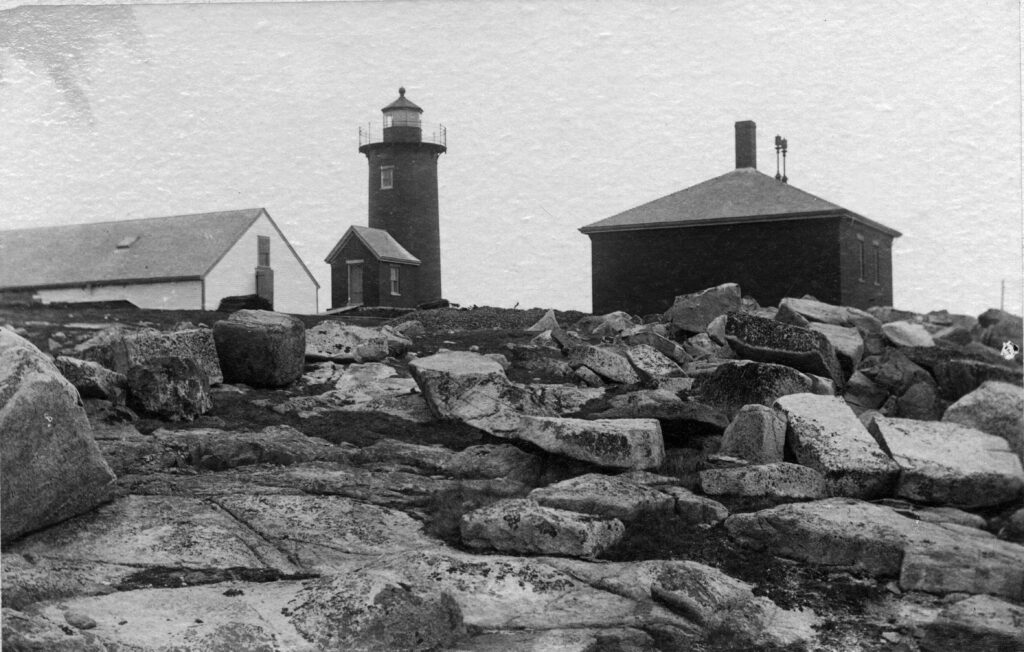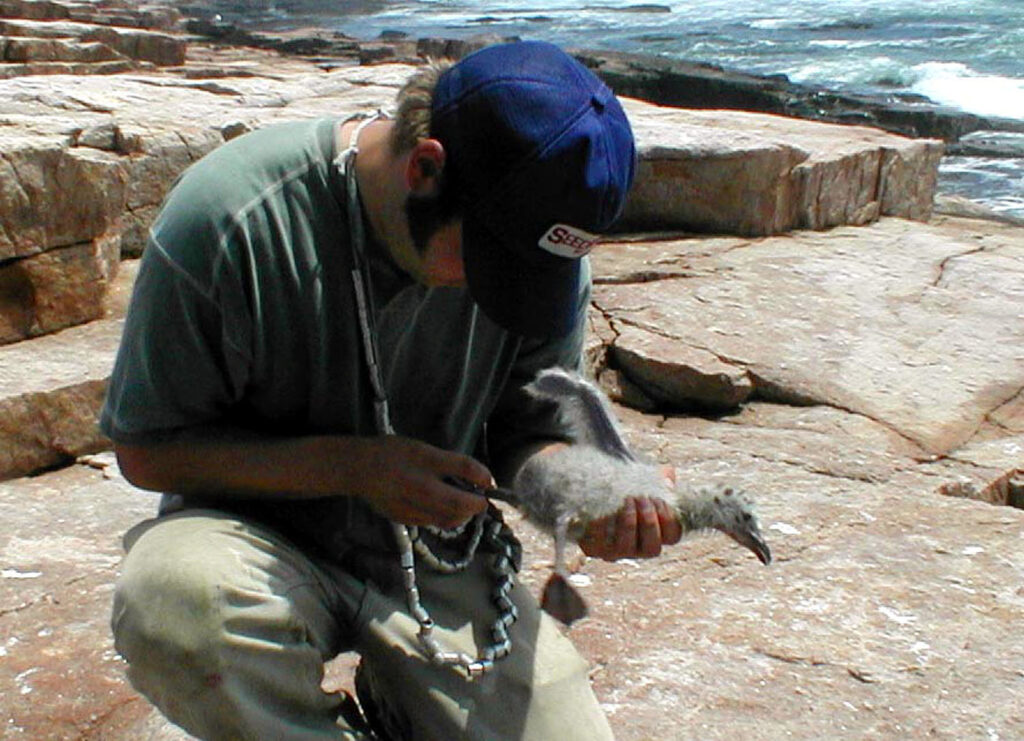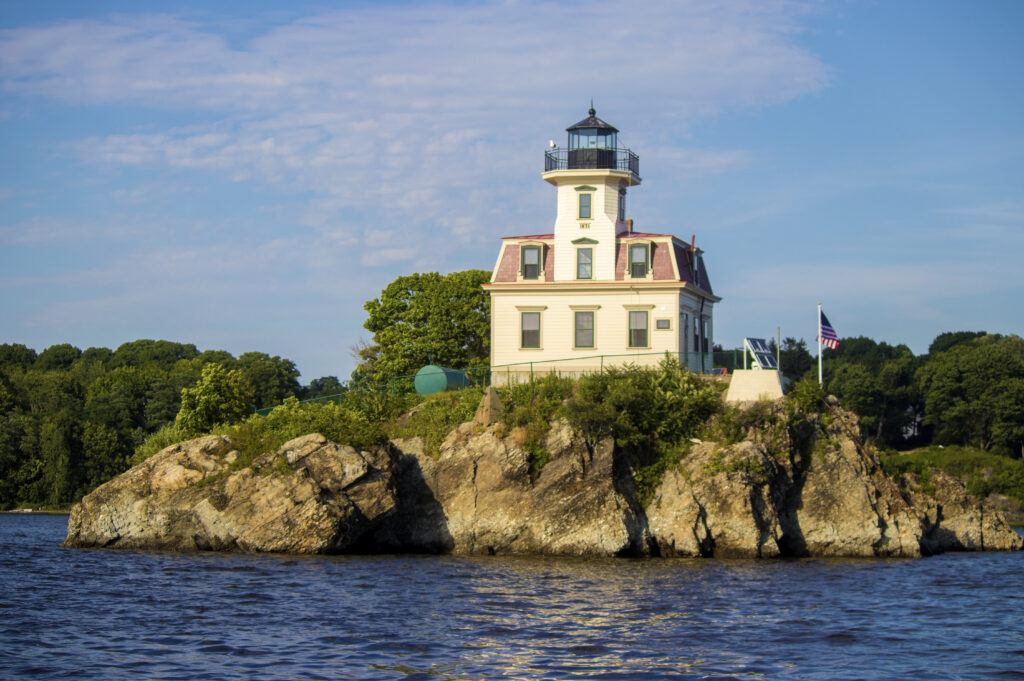 |
| Mount Desert Rock Light Station in 2002. Photo by Jeremy D’Entremont. |
The station was automated in late 1977. The light station was then leased to Bar Harbor’s College of the Atlantic for use as a whale watching station. Under the Maine Lights Program, Mount Desert Rock Light Station, along with Great Duck Island Light Station, became the property of the College of the Atlantic in 1998.
 |
| The 2019 Marine Mammal class pictured at Mount Desert Rock. In this class, in addition to performing marine mammal research, students learn to run the station. (College of the Atlantic) |
 |
| Sean Todd (College of the Atlantic) |
Sean Todd is the Steven K. Katona Chair in Marine Sciences at College of the Atlantic in Bar Harbor, Maine, and he also directs Allied Whale, the college’s marine mammal research program. He spent ten years in Newfoundland as part of the Whale Disentanglement team, a group that releases large entangled whales from fishing gear. In Maine he is trained as part of a first response team that performs a similar function. Sean also acts as a professional guide, including 14 seasons in the Antarctic and 11 seasons in the Canadian sub-Arctic and Arctic. He created, wrote, and stars in the award-winningLife in the World’s Oceans, a 30-part DVD series available from TheGreatCourses.com.
Use this player to listen to the podcast:



